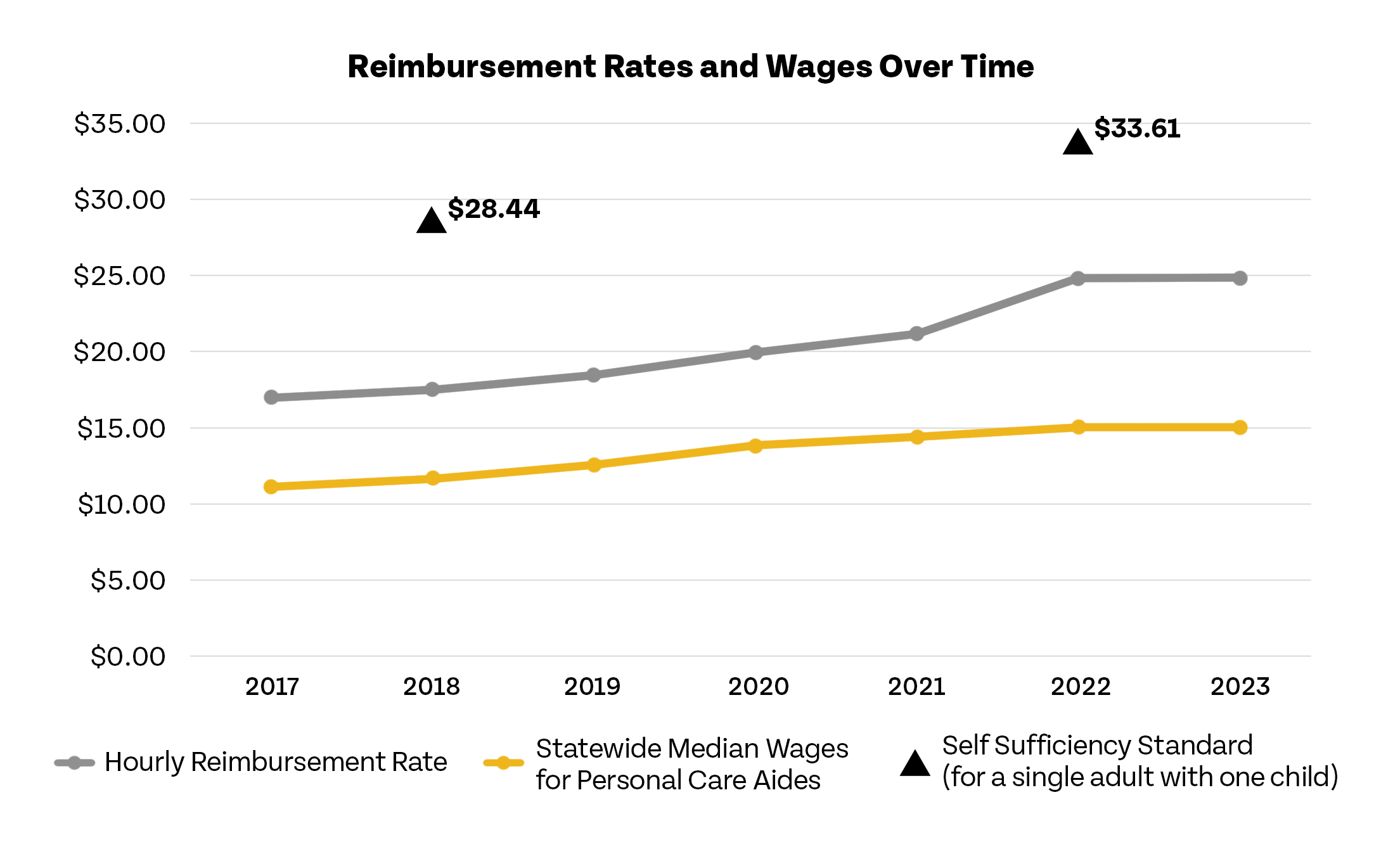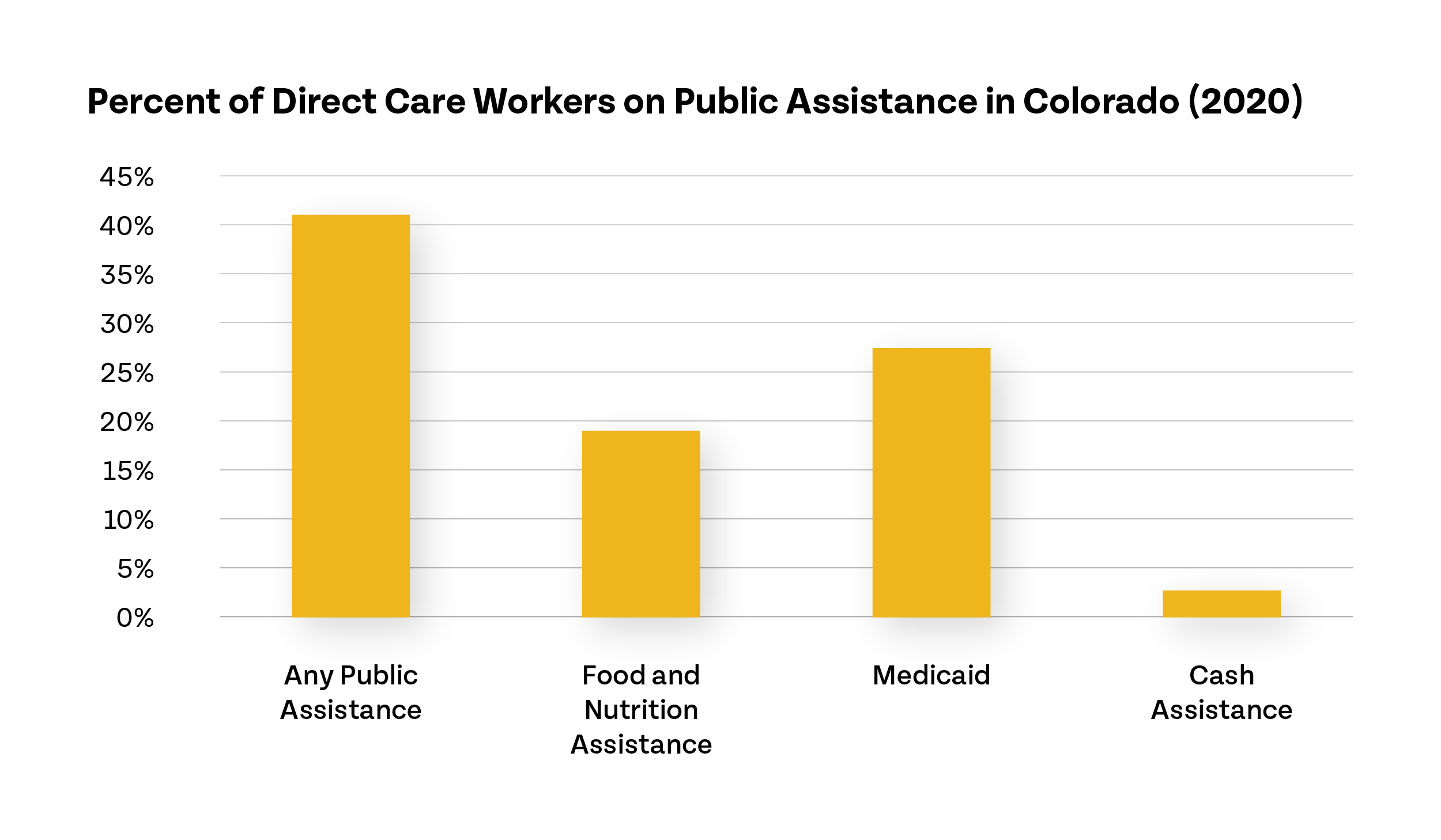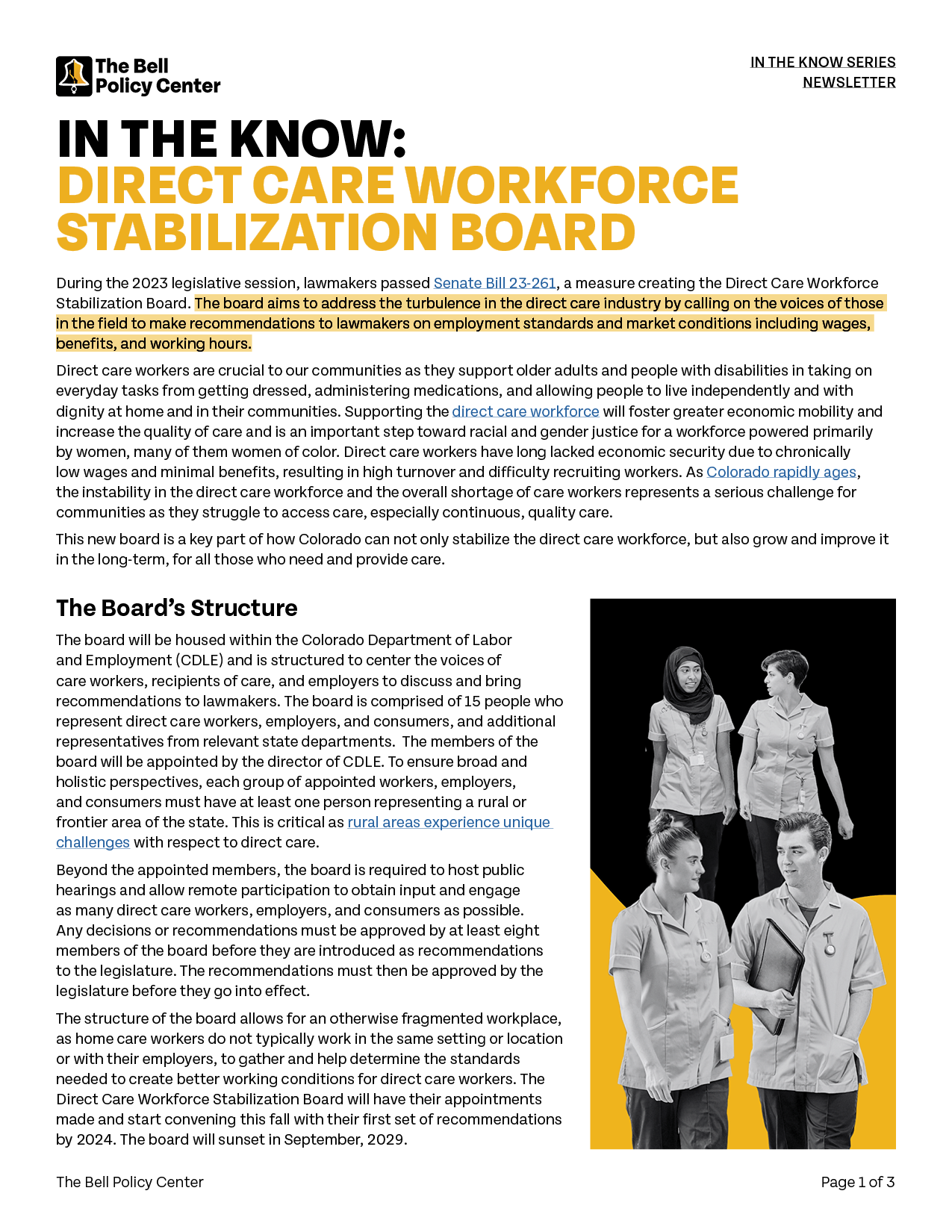In The Know: Colorado Bill Creates Direct Care Workforce Stabilization Board
During the 2023 Colorado legislative session, lawmakers passed Senate Bill 23-261, a measure creating the Direct Care Workforce Stabilization Board. The board aims to address the turbulence in the direct care industry by calling on the voices of those in the field to make recommendations to lawmakers on employment standards and market conditions including wages, benefits, and working hours.
Direct care workers are crucial to our communities as they support older adults and people with disabilities in taking on everyday tasks from getting dressed, administering medications, and allowing people to live independently and with dignity at home and in their communities. Supporting the direct care workforce will foster greater economic mobility and increase the quality of care and is an important step toward racial and gender justice for a workforce powered primarily by women, many of them women of color. Direct care workers have long lacked economic security due to chronically low wages and minimal benefits, resulting in high turnover and difficulty recruiting workers. As Colorado rapidly ages, the instability in the direct care workforce and the overall shortage of care workers represents a serious challenge for communities as they struggle to access care, especially continuous, quality care.
This new board is a key part of how Colorado can not only stabilize the direct care workforce, but also grow and improve it in the long-term, for all those who need and provide care.

The Board’s Structure
The board will be housed within the Colorado Department of Labor and Employment (CDLE) and is structured to center the voices of care workers, recipients of care, and employers to discuss and bring recommendations to lawmakers. The board is comprised of 15 people who represent direct care workers, employers, and consumers, and additional representatives from relevant state departments. The members of the board will be appointed by the director of CDLE. To ensure broad and holistic perspectives, each group of appointed workers, employers, and consumers must have at least one person representing a rural or frontier area of the state. This is critical as rural areas experience unique challenges with respect to direct care.
Beyond the appointed members, the board is required to host public hearings and allow remote participation to obtain input and engage as many direct care workers, employers, and consumers as possible. Any decisions or recommendations must be approved by at least eight members of the board before they are introduced as recommendations to the legislature. The recommendations must then be approved by the legislature before they go into effect.
The structure of the board allows for an otherwise fragmented workplace, as home care workers do not typically work in the same setting or location or with their employers, to gather and help determine the standards needed to create better working conditions for direct care workers. The Direct Care Workforce Stabilization Board will have their appointments made and start convening this fall with their first set of recommendations by 2024. The board will sunset in September, 2029.
Priorities of the Board
Broadly, the board is tasked with assessing and analyzing market conditions (wages, benefits, work hours, etc.) and employment standards every two years and developing recommendations to be presented to the legislature. While its recommendations will come from its analysis and are not restricted, SB23-261 outlines a few areas of focus that the board must address including wages and benefits, Medicaid reimbursement rates, working conditions, exploration of other industry models, and the impacts of racial and economic injustice.
For direct care workers, wages are strongly tied to Medicaid reimbursement rates, which have long been recognized as too low. The board will investigate the adequacy of the reimbursement rate as well as existing wages. Shown in the graph below, wages have seen little increase in the last six years.

Today, the median hourly wage for home care workers is $15.99, distant from the $33.61 that is considered to be a self-sufficient wage in Colorado for an adult with one preschool aged child in Arapahoe County. Largely due to the low wages earned, direct care workers often rely on public assistance to make ends meet and put food on the table. Forty-three percent of direct care workers in Colorado rely on some form of public assistance

Addressing the challenges faced in the direct care workforce stands to increase economic mobility, especially for women of color who are disproportionately represented in the direct care workforce.
Relatedly, the board is also tasked with investigating the impacts of racial and economic injustices on direct care workers and the recipients of care. Historically, domestic workers, a workforce underpinned by women of color, were excluded from the Fair Labor Standards Act and National Labor Relations Act. In 2013 the Obama administration extended the Fair Labor Standards Act to home care workers and there is continued work happening federally for a Domestic Workers Bill of Rights. In Colorado, it wasn’t until the 2022 legislative session that domestic workers, which includes home care workers, were afforded the same protections against discrimination and harassment in the workplace that other workers have. Stabilizing the direct care workforce is an essential step toward racial and economic justice and is important for the board to explicitly look at the historical and continued impacts of racial and economic injustice for care workers.
Finally, the board is also to develop an outreach plan to better communicate information to workers about their rights and the obligations of their employers. Again, in an industry where interaction between workers is limited, and an industry with few benefits and workplace protections, ensuring that workers know their rights is critical to their wellbeing.
Conclusion
The Direct Care Workforce Stabilization Board has the potential to create a better workplace for direct care workers through recommendations surrounding wages, benefits, and measures to address racial inequities in the field. A more robust direct care workforce will foster greater economic mobility for care workers and their families, and ultimately ensure all those receiving care now and in the future will be able to more easily access continuous, quality care. This board prioritizes the voices and experiences of those in the field to make recommendations and maps a process for these recommendations to the legislature to create long-overdue transformational changes in the industry.

